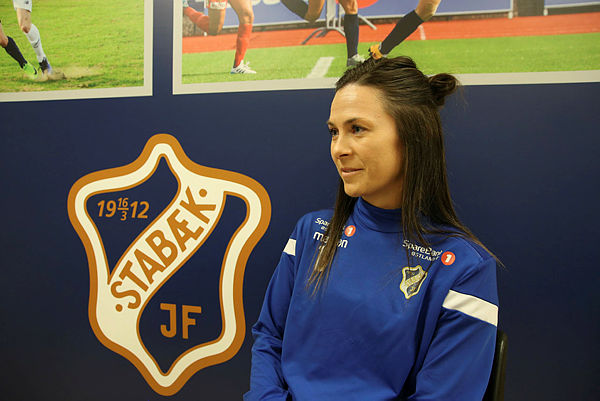OSLO: She first took to the pitch as a pesky little girl who followed her big sister everywhere. Today she is the top female footballer in the world, crowned with the first women’s Ballon d’Or.
Ada Hegerberg has captivated the football world, a “serial scorer” averaging almost 1.3 goals per match with her French team Olympique Lyonnais.
Hegerberg comes from a footballing family and used to watch her older sister and brother.
“Ada was the type to sabotage Andrine and their brother Silas’s trainings until she was maybe seven or eight years old,“ recalls their mother, Gerd Stolsmo, in the family flat in the east of Oslo.
“Then she went to a tournament. And there ... she was passed the ball, turned around, made a beeline for the goal, and scored. Again and again and again. Match after match. That was when it became so obvious,“ Gerd says.
At the time the football obsessed Hegerbergs were living in Sunndalsora, a sparsely populated town at the end of a fjord on the west coast of Norway.
Focus on football
The Hegerberg sisters were such talented players that they allowed to join the local boys’ teams.
In addition to team practices, the family would happily hold extra training sessions together. Nothing was ever left to chance.
On top of that, without her parents’ knowledge, the two girls would rise early in the mornings to run in the wooded hills before school.
Ada’s father Stein Erik Hegerberg is obsessed with details believing even a hair out of place can cost a player precious hundredths of a second on the field.
“Once you start, you have to be sure that everything is all set,“ he said. “The balls are properly inflated, shoes are polished with the laces well knotted and the hair tied back.”
To allow the children to focus on football, the Hegerbergs moved closer to Oslo.
Like Andrine, Ada joined Kolbotn, one of the top women’s clubs. She stood out.
“She was furious as a 15-year-old when she didn’t play a full match,“ recalls her coach at the time, Dan Eggen. “Based on the mentality and the skills at that time you were certain that this was a very good talent”.
Hat-trick express
The following year, Ada made her debut in the Norwegian women’s first division, scoring a hat trick in just seven minutes against the league’s top team.
“Ada had a scoring gene, an excellence you rarely see,“ says Kolbotn’s former sporting director Hege Jorgensen. “She’s a machine, by any standard.”
Around that time she was also called up to Norway’s national side.
Once a dominant team in women’s football, Norway have been erratic in recent years, a decline which has been marked by boycotts by star players.
Hegerberg has not played for her country since their disastrous showing in the 2017 European Championships in the Netherlands where Norway finished last in their group, failing to score a goal and seems certain to miss the World Cup this summer in France.
She has been labelled a “prima donna”, but among the many versions of what happened it’s impossible to be sure.
By her mid teens, football had become more important than anything else in Ada’s life, even exams if they coincided with the national squad’s practices.
“Her mother Gerd had made it clear: football was more important than exams. You could always take your exams later,“ recalls Hege Jorgensen.
In 2011, the 16-year-old jumped on a train by herself to Stabaek, just outside Oslo, to sign for the local club, also known for fostering young talent in Norway.
“In the middle of the summer we were sitting in the office having a chat, me and the coaches. And suddenly there was a knock on the door and there was this young girl who came in: ‘Hey, I’m Ada. I want to play for Stabaek’,“ says the team’s sporting director Richard Jansen.
Call from afar
That determination is also evident on the field.
“The winner mentality,“ says her former teammate Siri Nordeide Gronli.
“I remember we played the Cup final one year and she had been out for a few weeks with illness and she didn’t train with the group,“ the Stabaek defender says. “She came, played the finals and then she scored a hat trick: one with her right foot, one with the left foot, and one with her head. And we won four-nil.”
Norway grew too small for Ada.
At 17, Ada, and 19-year-old Andrine, headed off together to Germany to play for the Turbine Potsdam.
“The house became very empty but they made their choice: we’re leaving and we’re not coming back for three years, even if it’s a fiasco,“ says Stein Erik Hegerberg.
That was six years ago. Andrine is playing for Paris Saint-Germain and Ada is the first ever winner of the women’s Ballon d’Or. — AFP









